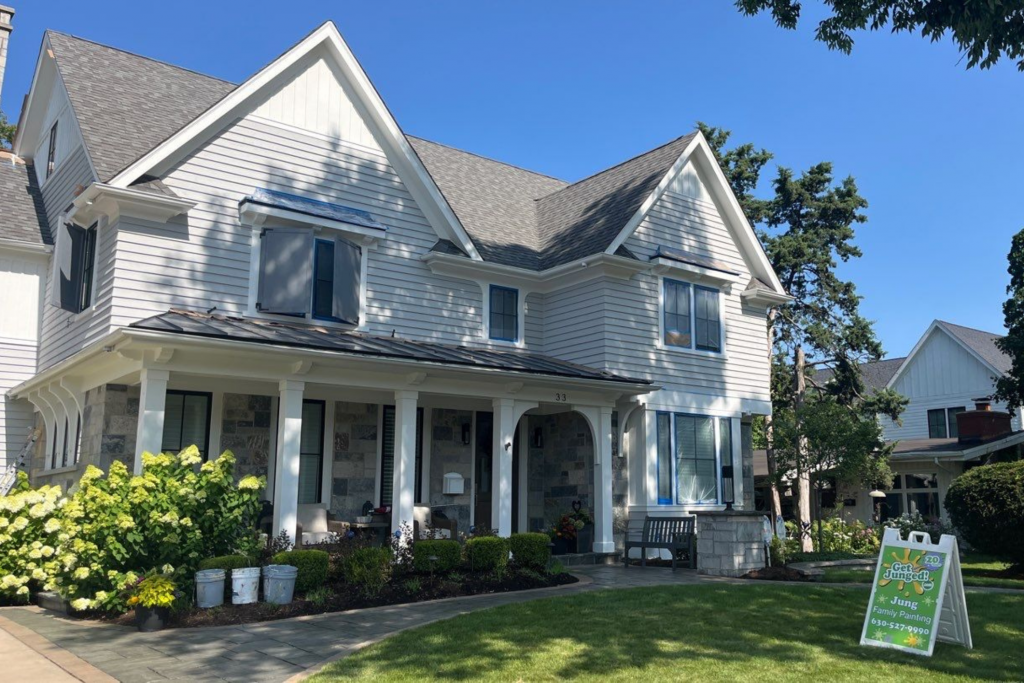
How To Check The Quality Of Painting Work
A fresh coat of paint can transform a room or revive your home’s exterior. But how can you tell if the work was done right? Knowing how to check the quality of painting work ensures you get the value you paid for—and helps protect your investment for years to come.
Whether you hired a professional crew or tackled the job yourself, a thorough inspection can reveal the difference between a flawless finish and one that will need touch-ups or repairs sooner than you’d like.
This guide walks you through exactly what to look for, how to measure paint quality, and what red flags to avoid. You’ll also get a handy homeowner’s painting quality checklist to make your inspection simple and effective.
How do you know if a painting is good?
A high-quality paint job looks beautiful on the surface—and holds up under closer inspection. Here are some key indicators:
- Consistent color coverage – No streaks, blotches, or areas where the old color shows through.
- Straight, crisp cut-in lines – Transitions between walls, ceilings, and trim should be sharp with no wavy edges or paint bleed.
- Smooth finish – No visible brush strokes, roller marks, or “orange peel” texture unless intentionally applied.
No drips or splatters – Surfaces should be clean, and adjacent areas (floors, windows, trim) should be free from stray paint.
How to measure paint quality
Visual inspection is the first step, but paint quality is also about durability and performance:
- Even sheen – The gloss level should be consistent across the wall, with no dull or shiny patches (a sign of uneven application).
- Adhesion – Paint should bond firmly to the surface without peeling or flaking.
- Washability – High-quality paints resist stains and allow gentle cleaning without color loss.
- Scratch resistance – A light fingernail scrape shouldn’t leave obvious marks on cured paint.
These qualities depend not only on the paint brand but also on correct preparation and application techniques.
Common signs of poor-quality painting
If you notice any of these, it’s a sign the job may need touch-ups—or a complete redo:
- Peeling, bubbling, or blistering – Often caused by painting over damp or dirty surfaces.
- Uneven coverage or flashing – Shiny spots in matte finishes or inconsistent color depth indicate poor technique or skipped primer.
- Paint on unintended surfaces – Overlap onto trim, ceilings, outlet covers, or floors shows lack of attention to detail.
- Rough texture – Specks of dust, dirt, or dried paint particles trapped in the finish.
Painting quality checklist for homeowners
Here’s a step-by-step painting checklist you can use immediately after the job is done:
- Inspect in natural daylight – Sunlight reveals imperfections more clearly than indoor lighting.
- Check corners and edges – Lines should be neat, with no smudges or overlap.
- Look at multiple angles – Shadows can reveal roller marks or missed spots.
- Examine high-touch areas – Around door frames, light switches, and windows for neatness.
- Test adhesion – Lightly press masking tape to the wall and pull away; no paint should come off.
- Review cleanup – Floors, fixtures, and furniture should be spotless.
How to check the quality of painting work at home
If you want to assess your paint job without professional tools, here’s how:
- Daylight test – Inspect during daylight hours for accurate color and surface visibility.
- Touch test – Surfaces should feel smooth, not gritty or bumpy.
- Moisture resistance – Lightly wipe with a damp cloth in low-risk areas; quality paint should not streak or lift.
- Magnified inspection – A small magnifying glass can reveal brush hairs or debris in the finish.
How to pick a painting contractor
The easiest way to ensure top-quality work is to hire the right contractor from the start:
Check reviews – Look for consistent praise for attention to detail and professionalism.
- Ask for a portfolio – Before-and-after photos reveal skill level.
- Request a written guarantee – Warranties show confidence in workmanship.
- Get a detailed quote – Itemized pricing makes it clear what’s included and prevents shortcuts.
Hiring a reputable local company like Jung Family Painting means you’ll get a crew committed to both beauty and durability.
Understanding painting cost and quality
It’s tempting to choose the lowest bid—but with painting, you often get what you pay for. Cheaper jobs may skip essential prep work, use lower-quality paint, or cut corners on application
Typical Illinois pricing for quality work:
- Painting a room – $500 to $1,500 depending on size and detail.
- Painting a 2-story house exterior – $3,500 to $8,000, depending on surface type and prep needs.
- Interior of a 2,000 sq ft house – $4,000 to $9,000 for a thorough, high-quality job.
Estimating a paint job accurately
If you’re budgeting for a project, here’s how to get an accurate estimate:
- Measure square footage – Length × height for each wall, plus ceilings if included.
- Apply rate per sq. ft. – In Illinois, $2–$6 per square foot for interiors; $2.50–$7 for exteriors.
- Add prep work cost – Repairing drywall, sanding, priming, or power washing can add significantly.
- Factor in materials – Quality paint, brushes, rollers, drop cloths, and tape.
Why quality matters
A flawless paint job doesn’t just look better—it lasts longer, resists damage, and protects your home’s surfaces. Cutting corners can mean repainting sooner, which costs more in the long run.
At Jung Family Painting, we combine premium materials with skilled craftsmanship to deliver finishes that impress from day one and stay beautiful for years.
Final Tip: If you’ve just had painting done, take the time to inspect it carefully. The best painters will welcome your questions and walk you through the work to ensure you’re 100% satisfied.
Ready for a paint job you’ll never have to second-guess? Contact Jung Family Painting today for a free, no-obligation estimate and experience the difference that true craftsmanship makes.
